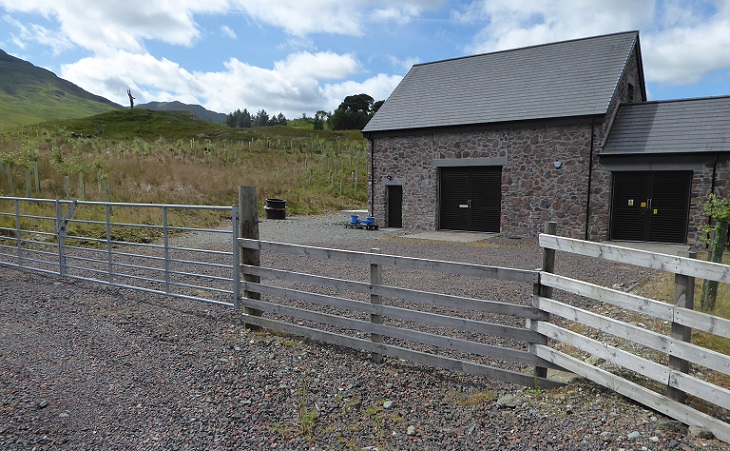
In my recent post criticising the use of plastic tree tubes to plant woodland in the Cairngorms (see here), I argued that tree shelters wouldn’t be necessary if nature was not so out of kilter – primarily due to sporting land management. The addiction of the native woodland planting business to tree tubes, however, goes deeper than that. Like fencing, plastic tree tubes are now used almost as a matter of course with no regard to the circumstances.
I have previously remarked on this in respect of landscape planting around developments in the Loch Lomond and Trossachs National Park. For example, the Loch Lomond and Trossachs National Park Authority (LLTNPA) allowed deciduous native trees to be planted in tree tubes within the new fenced area around the upper Glen Falloch hydro station. This was in sight of the most southerly remnant of the Caledonian pine forest in Scotland and pre-empted the opportunity to extend that through natural regeneration. That is likely to have been particularly rapid due to the mineral soils exposed by the hydro construction works.
The landscaping argument against this is twofold. First, that whatever the soils, tree shelters enable trees to grow even faster, screening ugly developments and absorbing carbon out of the atmosphere. Second, that even where areas are fenced, there is still a need to protect trees from grazing animals.
Both parts of the argument are flawed, the first fundamentally. Any carbon absorbed from the atmosphere by the tree, however quickly it grows, is temporary. It can never compensate for the concentrated carbon that is extracted from beneath the earth’s surface to make plastic. There may be an argument for the use of tree tubes made out of other materials, but the use of plastic is fundamentally damaging. If we want to mitigate climate change we need to stop using non-essential plastics now.
As for the impact of grazing animals, if nature is out of kilter and there are no predators to keep down the numbers of hares, rabbits, voles etc they may well present a serious “threat” to tree planting. In my view that risk, where it occurs, could be largely fixed if the persecution of predators in our National Parks was stopped. But at present the planning system doesn’t even consider whether there is any risk. Instead it approves landscaping proposals without any consideration of the “need” for planted saplings to be protected.
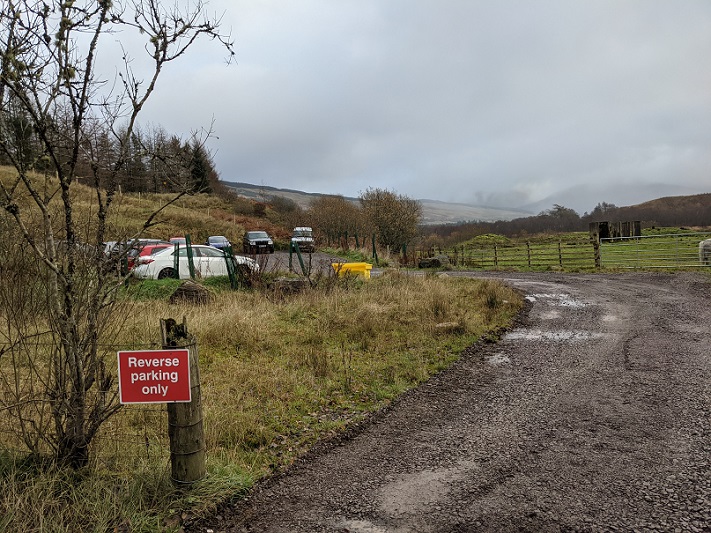
I came across a good example of this a couple of weeks ago at the new car park at Dalrigh. The car park was consented back in 2017 as part of the Cononish goldmine development and constructed before the main work started.

It is not difficult to find far worse examples of the use of tree tubes in landscaping. The ones around the Cononish car park have been used relatively sparsely – so in theory should be easy to remove eventually -and the colour of the plastic, while standing out in winter, is acceptable.
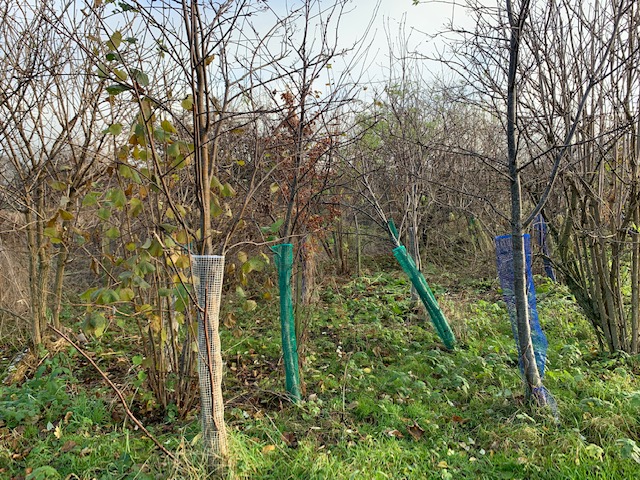
While some of the problems commonly associated with the use of tree tubes are evident at the Dalrigh car park, they could be a lot worse. Most of the trees so far have survived and most are still fairly upright:
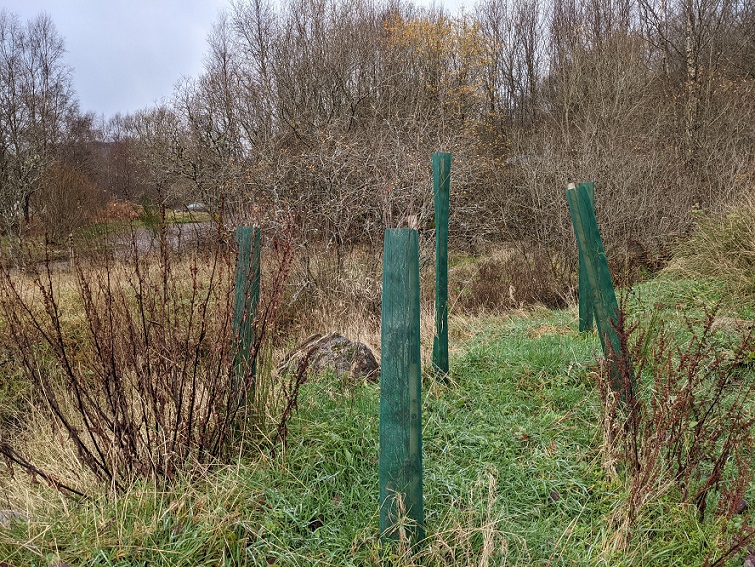
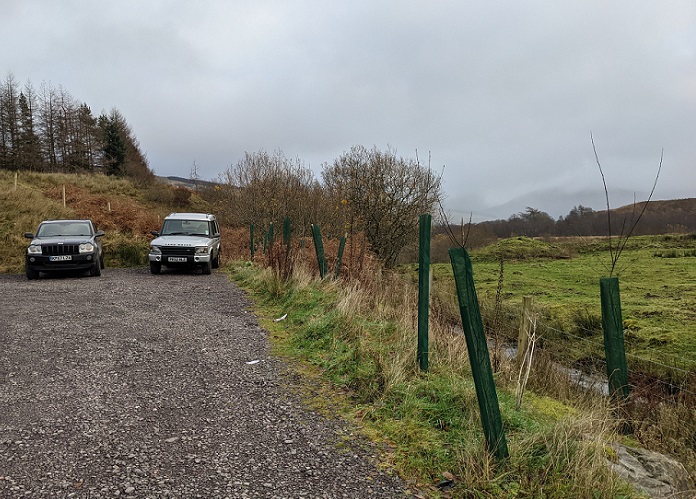
But the key point is that just outside the new car park and all around the older car park native woodland has been regenerating perfectly naturally without human interference:

Even if the Scotgold, the developers, had wanted to plant some different trees to increase the diversity of species found on the site or for screening purposes, plastic tree tubes would not have been necessary on this site. And so it is for lots of places across Scotland – as you can see from all the natural regeneration along roads and railways. Unfortunately, our planning system is so unfit for purpose when it comes to the environment and climate change that it doesn’t even take account of this.
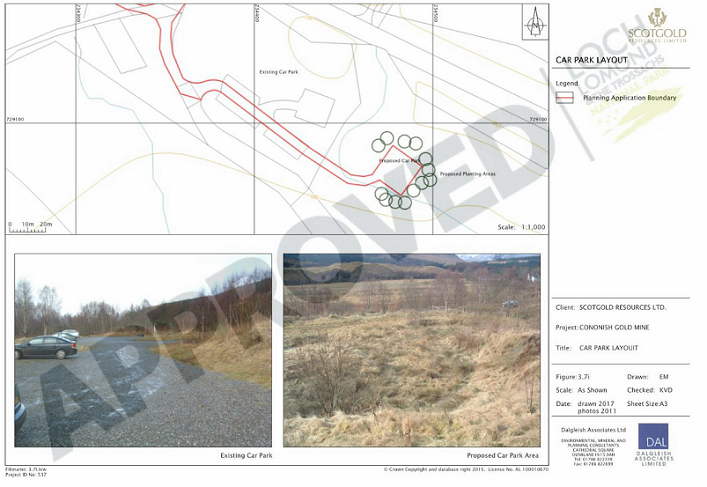
After my visit I checked the planning application and could find no information about HOW the trees were to be planted. While there are many reasons to criticise Scotgold’s development, I am not criticising them for this: like other large developers, they leave such issues to their landscape consultants.
Even if awareness of the environmental impact of plastic was only growing in 2017, a world-beating National Park might have picked up the issues before the car park was eventually built. Neither of our National Parks have any excuse now. They should be checking every development proposal that has been approved and vetting all new developments that includes tree planting to ensure they are plastic free. That should be part of a much more rigorous approach to the way they assess the impact of developments on the natural environment. If we cannot even stop the use of plastic tree tubes in our National Parks, we are not going to change anything.

I read a report lately that in the 2016 to 2019 the Woodland Trust planted 12.9M trees. Highly commendable, but, if all of those saplings were protected by plastic tubes….12.9M!!! They have said that they are looking at alternatives. Further to that the recycling of plastic is encouraged, BUT, since plastic was first produced, only about 10% has ever been recycled. Where has the other 90% gone? Well some of it is being burned to fuel power stations, some is buried in landfills and some disintegrates into the ground/ sea, at which point it gets recycled by animals and fish returning to our food chain. The world production of plastic is expected to double in the next 20years. We need to start somewhere to reduce our reliance on plastic and its use. Planting trees using an alternative such as wire mesh would be a good start.
I’ve spent many hours at the Cunnegar loop removing mech round trees! Once the tree is growing through to mech, it’s a big task to liberate even one tree.
As an aside, I suspect turning fossil fuels into plastic, and then disposing of the plastic by burying or droopping it into the sea is carbon neutral and doesn’t contribute to climate change. It does have many adverse environmental impacts, but climate change isn’t one of them.
Hi Robert, that is brilliant what you have been doing and a good argument against those who argue these tubes should be easy enough to remove. While you are probably right that plastic breaks down very slowly and is initially more of an environmental than a climate issue, recent research indicates that it does break down down and release greenhouse gases. For information about the carbon costs of plastic all the way through its life cycle I’d recommend this link – the summary report provide a clear introduction to the issues https://www.ciel.org/reports/plastic-health-the-hidden-costs-of-a-plastic-planet-may-2019/